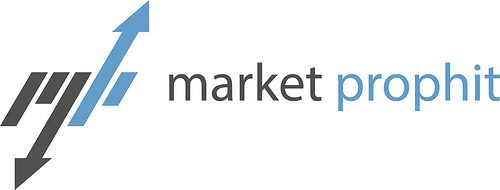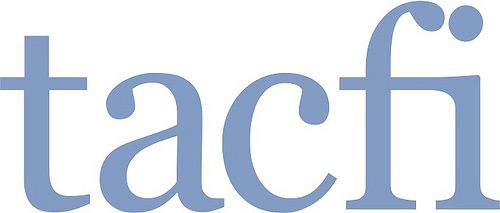
In our third installment of FinovateSpring Behind the Scenes, we introduced you to Tactile Finance, Visible Equity, and Vorstack.
This week, we talk about another three companies that made their Finovate debuts at the San Jose conference this spring. They are stock market sentiment analysis platform Market Prophit, micropayments innovator, Nearex; and insurance education specialist, Sureify.
What they do
According to Market Prophit CEO Igor Gonta, his company may be most easily understood as MorningStar + Klout for financial pundits in social media.
Market Prophit gives financial bloggers and pundits an opportunity for greater recognition of their work than might have ever been possible in the pre-social era. “I’m going to make a lot of people famous,” Igor says.
And potentially a lot more people rich. In aggregating and scoring the stock-picking accuracy of financial analysts and pundits (tracking the performance of more than 350,000 people and ranking as many as 5,000 a day), the platform provides investors with the ability to find and trade or invest alongside the savviest of the financial blogging bunch. Investors can also use Market Prophit to see how the stocks they own are viewed by the top ranked, Market Prophit financial bloggers who know those stocks best.
Stats
- Self-funded
- Founded in January 2011
- Launched technology in June 2013
The experience
“We are democratizing the marketplace for the everyday investor,” says Igor, “so they can get information as fast as the pros.” Igor points out that hedge funds have had access to similar technology for some time – though he believes his own data is unique enough for him to eventually be able to sell it to hedge funds.
But the real goal is to help bring “hedge fund quality analytics” down to the consumer. “Why shouldn’t we all share in knowing what’s happening with our stocks as fast as it’s happening?” he asks.
Market Prophit focuses on the stock market conversation that takes place over Twitter. And if you think Twitter is just digital greasy kids stuff, Igor cites a recent market-moving tweet about Apple by activist investor Carl Ichan and the frequent Twitter activity of notable investing personalities like CNBC’s Jim Cramer as reason why he monitors this social media channel above all others.
The technology generates a Market Prophit score based on the performances of the stocks mentioned. This enables users of the platform to find readily those successful pundits most worth following – some of whom are often far less well known compared to more famous, but less accurate stock market watchers.
The advantage of crowd-sourcing stock predictions is that it allows you to filter the great mass of prognosticators from those who, historically speaking, have tended to know what they are talking about. Market Prophit has developed this kind of sentiment analysis tool, that helps separate the investing wheat from the chaff.
In his demo in San Jose, Igor demonstrated how a negative turn in sentiment among the “smart money” anticipated a move lower in a stock several days before sentiment in what he calls “the crowd” began to sour. For both traders looking to take short-term profits and longer-term investors buying dips, this kind of information is broadly valuable.
Market Prophit has other unique features, such as Buzz that helps traders and investors detect spikes in “chatter” that may be indicative of increased interest and potential activity in a given stock.
The platform also includes a number of features that stock traders and investors know and love such as heat maps (see above). Market Prophit’s map shows stocks by both Sentiment and Buzz. Users of the platform can also analyze stocks organized by top and bottom sentiment, sentiment change, buzz, price change, and other criteria. Again the goal is to provide as much easy to read, potentially actionable sentiment data to the average trader or investor as possible.
It is impossible for the average investor or trader to keep up with all the information that might impact a stock’s behavior. But by aggregating and scoring sentiment data on thousands of opinions on thousands of stocks, Market Prophit brings Big Data down to where the little guy and gal can get at it.
What they do
Nearex specializes in micropayments. Specifically, the company’s goal is a technological replacement for the cash that is used for the low dollar and sub-dollar transactions that take place all day, every day in economies around the world.
Their solution, the Xip Micropayments System, features an inexpensive hardware device for merchants and a card for consumers that enables
tap-and-go transactions that are as fast and easy as paying with cash. Xip is low-cost, and integrates well with existing payment and banking systems. In demo at FinovateSpring, the live transactions shown were quick and smooth.
The stats
- Founded in December 2012
- Technology launched in April 2014
- $1 million in funding raised
- Based in Singapore
The experience
The Nearex technology helps solve two mobile payments problems: hardware costs for the merchant, and the finding the right payment device for the consumer. And both of these challenges are all the more daunting when we consider third world economies and markets.
Nearex has clearly taken this into consideration. Although creating both a hardware device that is credit card sized and the width of a couple of SIM cards, and a secure card that enables contactless payments, the company has ensured that the costs of reproducing both are minimal.
In fact, company CTO Arun Tanksali called the device “the lowest cost merchant payment acceptance device that you can get today,” and noted that Nearex was targeting the same price point as that of the most basic mobile phone.
So how does the technology work? From the point of view of the consumer, the XipTAG is straightforward. Take the card to the merchant, who has entered in the value of the transaction. Tap the card to the merchant’s XipPOS device and the transaction is completed. The consumer receives confirmation on his or her mobile phone, while the merchant can retrieve transaction information from XipPOS.
The merchant’s XipPOS devices uses a SIM card, and runs on a battery that lasts for days on a single charge. Merchants and consumers can check transaction histories and mobile money account balances. The technology also provides authentication and other controls. Users, for example, can set spending limits that will prevent transactions above a certain value, or require additional identity verification such as a PIN.
Mobile money service providers have been among the companies to express the greatest early interest in Nearex’s technology. There has also been interest by banks and financial institutions looking to better serve their mobile-first or mobile-only customers. Mayank says that in addition to looking for partners and raising funding, the company is looking to expand in emerging markets, particularly Latin America.
What they do
“We educate life insurance consumers before they become your customers,” explained Dustin Yoder, CEO of Sureify. The company offers a way for those seeking insurance to learn about insurance in general and their insurance needs in specific – without the pressure of dealing with an insurance salesperson at the same time.
The company is focused particularly on Millennials, who are moving into adulthood and family formation. This is a group Dustin and the Sureify team believes is especially attracted to the way Sureify presents educational and informative material on the business of buying insurance.
The stats
- Founded in May 2012
- Technology launched in April 2014
The experience
Sureify specializes in helping consumers understand the world of life insurance, arguably the most commonplace and most complicated of the kinds of insurance that most people buy sooner or later. The company offers a short online process that helps people determine their life insurance needs, and compare their needs with term and whole life policites to make the ideal fit.
Sureify starts off the process of helping educate consumers about insurance by focusing on the options available to them. Here, the website provides a pair of videos featuring Sureify CEO Dustin Yoder himself, one video each for discussing term and whole life insurance.
The next step is for insurance consumers to figure out how much insurance they need. Here, consumers simply answer 10 questions (gender, age, marital status, income, etc.) that the Sureify algorithm uses to help determine the amount of life insurance needed.
Sureify then provides a breakdown that lets consumers see individually and compare side-by-side term and whole life insurance options based on annual and monthly premiums, as well as cash value (if applicable). Consumers can see how the amount change based on 10-year, 20-year, and 30-year durations.
Dustin says that he began Sureify as an educational resource for life insurance in large part because it provides the biggest challenge – and biggest insurance expense for the average insurance consumer. But over time, it is possible that tools to help consumers with other forms of insurance, as well, such as auto insurance.
“Right now the experience of shopping for and buying insurance is just awful,” Dustin says, positioning Sureify as
the kind of technological “unbiased mentor” that can make a difference in the way people learn about and purchase insurance. He talks about Sureify as a Mint.com or a Trulia of insurance. “Down the line” goals he admits. But given the fact that 86% of insurance consumers do research before buying a policy, his model of making that research more accessible and easier to understand may be particularly well-placed.
Our Behind the Scenes series continues next week. Stay tuned for more!
 Silicon Republic reports: Disruptive banking service Holvi gets regulatory approval to spread across Europe.
Silicon Republic reports: Disruptive banking service Holvi gets regulatory approval to spread across Europe.




































 Frost Bank
Frost Bank
















